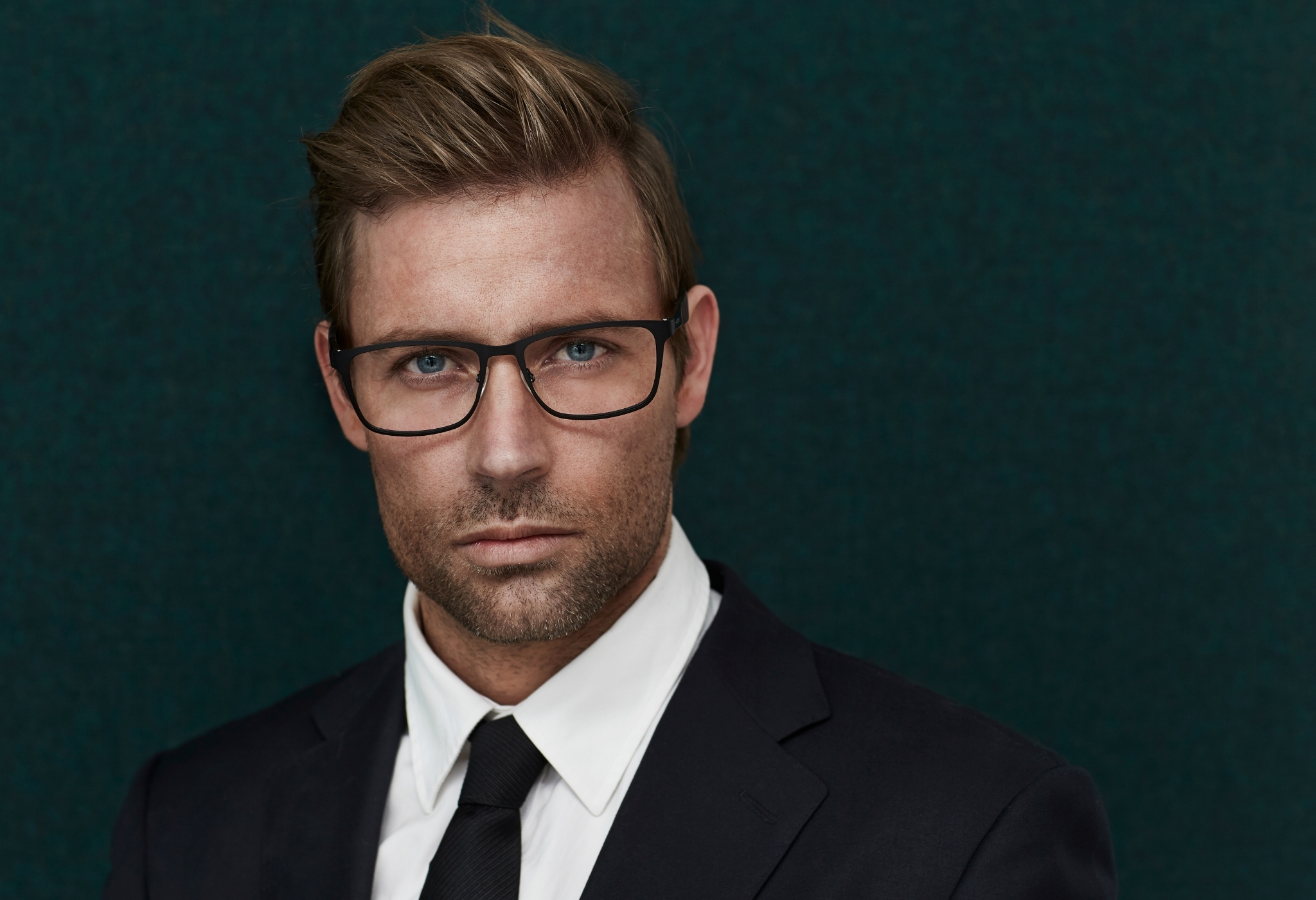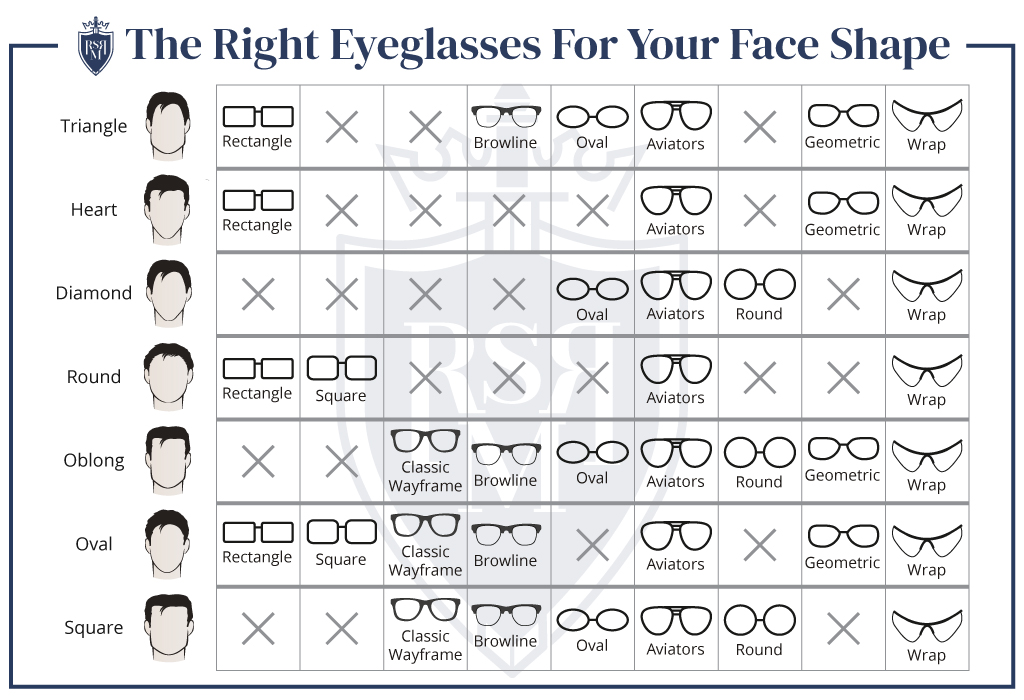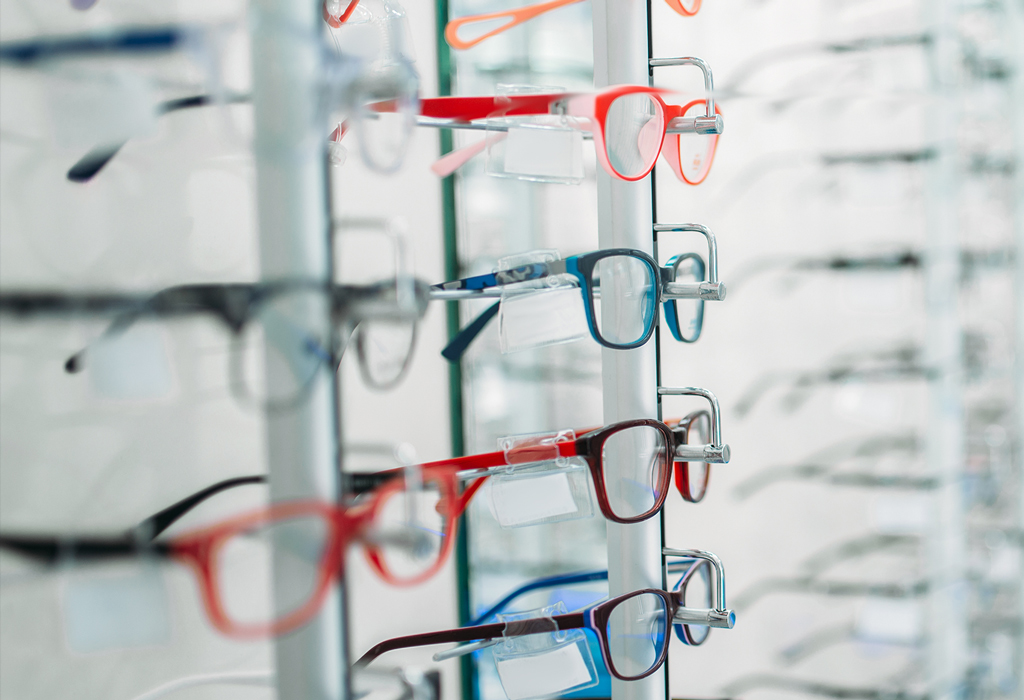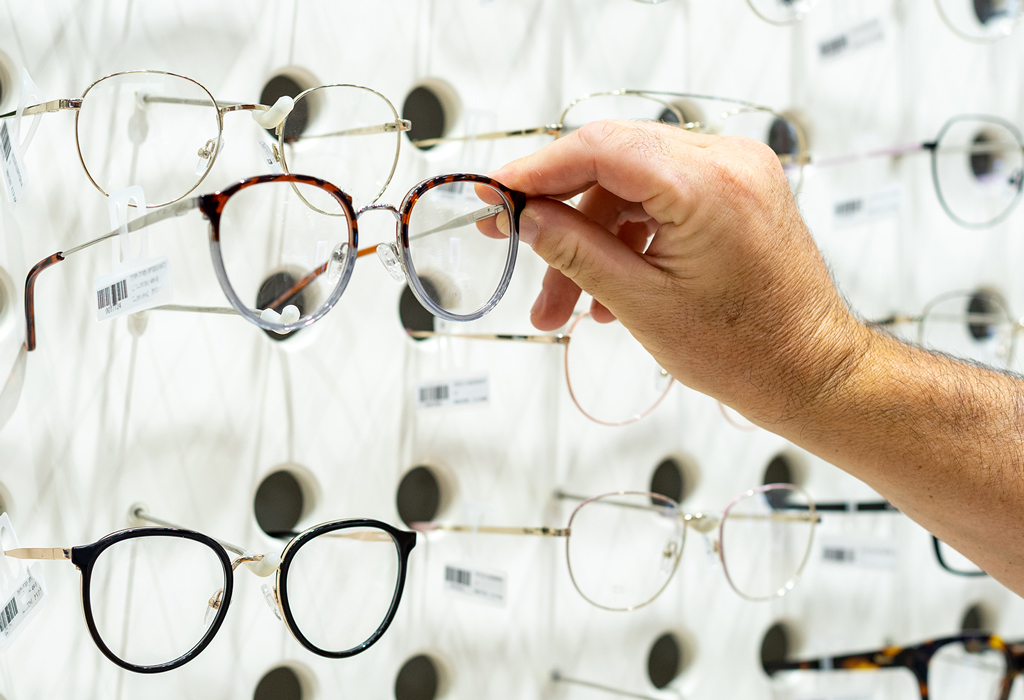The Vision Council of America estimates that about 75% of the country uses vision correction. That means more men than not have at least faced the possibility of wearing glasses — and that's not counting people who've considered “vanity” frames with non-corrective lenses.
Because of this statistic, learning how to buy eyeglasses for your face shape is critical to not letting sunglasses kill your look.
In this article, we will discuss:
- Should A Man's Glasses Be Noticeable?
- Glasses & Face Shape
- Choosing The Color Of Your Glasses
- Frame-Sizing
- Frame Materials
- Vanity Glasses

Should A Man's Glasses Be Noticeable?
There's a traditional school of thought that says glasses should be unobtrusive. This idea will tell you to wear the thinnest wireframes possible to try to make the glasses vanish into your face and remove them from the visual impression altogether.
The problem is that's not possible — you just become a man in thin glasses. That may not be the best look for every man's face.
On some, it may even take a strong profile and make it look less striking. More modern fashions have embraced the idea of glasses as an expression of style, the same as a necktie or a pocket square.
Shape and even the color of frames can become a part of your visual identity. And for most men, that's going to be the right choice — though, like any accessory, it's essential to keep the glasses in their place.
These aspects of eyeglasses can be detrimental to making a great first impression.
They should complement your style, not define it. A pair of glasses that's the most memorable thing about it risks becoming a novelty rather than a stylish accent. So exercise some restraint.
Glasses & Face Shape

Here's the basic rule for how to buy eyeglasses for your face shape — figure out what your face is lacking, and get frames that provide it. If you have a very angular face with lots of lines and planes, you want rounded glasses to add some curves in there. You'll do better in straight or angled glasses if you have a soft face with curving features. That's the fundamental paradigm.
Within it, there are some basic dos and don'ts for the various shapes we see faces in:
Glasses For A Round Shaped Face

To be considered “round,” a face needs to be the same width and height, with a curving chin and cheeks. Something angular and slimming is your best look for a round face. Flat, rectangular lenses will make your face appear longer and thinner, mainly if they sit high on your face.
A little bit of a “butterfly” taper — where the edges of the lenses closest to your nose are shorter than the outer edges — can work, but the corners should be squared off rather than rounded. Thick frames look a little clunky on a round face, so keep the actual material thin.
Glasses For A Square Shaped Face

A square face is similar to a round face in that it's about equal in width and height.
The features are more angled, with a broad chin and strong jaw squaring the shape off.
Men who want to soften their impression up a little can wear rounded lenses.
If you like the strong profile and don't want glasses to make you look imposing, squared-off shapes can still work, but be sure the lenses are large and about even in height and width.
Narrow, rectangular lenses on a broad, square face will make you look like you have a permanent squint rather than a steely-eyed determination.
The frames should stay slim — thick, dark frames give a square face an overpowering impression that will draw away from the rest of your appearance.
Glasses For An Oval Face Shape

Oval faces are the universal blood type of eyewear. They work well with most styles as long as you avoid the extremes. An oval face is taller than it is wide, with a rounded chin and high cheekbones, and it can wear either squared-off frames or curving ones.
The lenses can be narrow or wide, though too square or circular a lens (where the height and width are close to the same) may look a little clunky for your narrow face. A thicker frame can add definition to your face — be careful not to get anything so heavy that it overpowers your actual features.
Glasses For A Heart Shaped Face

Narrow cheekbones and a small chin look very pretty in photos, but they're a pain to fit for glasses. You can take a lot of the emphasis off a pointed chin by wearing wider lenses at the top than the bottom. A butterfly taper outward can help as well by bringing the attention in toward the center of your face.
Stay away from anything too blocky or squared-off — it won't work with the curves in your face's shape. Ultra-narrow frames may look a little wimpy on a heart-shaped face, so don't be shy about a thicker wire or plastic.
Click here for the infographic on buying the right eyeglasses for your face shape.
Choosing The Color Of Your Glasses

Unless you have the money for multiple frames, you're going to be stuck with the color of your glasses for a long time. Choose it carefully!
The more formal dress code limits Suit-and-tie men to the most traditional and neutral options — base metallic colors (gold and silver tones) or fine black are acceptable. But anything thick, plastic-looking, or brightly colored is going to clash with the business dress.
More casually dressed men can add colors, either as the solid base of the frames or as detailing. Thinner frames may be best for men looking to add color — a thick, brightly-colored frame moves into the realm of novelty or costume gear.
Frame Sizing

Learning how to buy eyeglasses for your face shape isn't just about shape, but getting the right size for your face as well.
If you've looked closely at the packaging (or sometimes the frame itself), eyeglass frames use three numbers to size.
They represent the lens size, the bridge across the nose, and finally, the length of the temples (the hooks that go over your ears).
Unfortunately, these measurements can't take the thickness or shape of the wires into account, so one set of frames may feel much more comfortable than another with identical measurements.
Lighter, thinner frames will generally sit more comfortably and allow a closer fit. Large, heavy frames may need to be sized looser than usual.
Frame Materials

There are dozens of different chemicals and alloys used to make eyeglass frames. Plastics and nylon-based composites are usually used for brightly-colored glasses, though painted metals are also available.
Zylonite (sometimes called “Zyl”) is lightweight, affordable, and available in almost any color. Higher-end sports glasses can be equally colorful but are more flexible nylon materials.
Titanium and titanium alloys are popular metals for their lightweight and flexibility. Be cautious of cheaper blended metals if you have sensitive skin — most alloys used for eyeglass frames include nickel, which some people have a contact allergy to. Aluminum frames are cheap but not very durable.
Vanity Glasses

Some men look better in glasses. If you think you're one of them but you don't happen to need eyeglasses, there are “vanity frames” or “costume glasses” available that have plain window glass inside the frames. They do not affect your vision, other than the occasional reflective flare or fogging issues.
If you are going to elect vanity glasses, it is imperative that you how to buy eyeglasses for your face shape, or you will kill any look you put together unnecessarily.
FAQs: Choosing Eyeglasses Based On Your Face Shape
How important is face shape when choosing eyeglasses for men?
Face shape is a key factor when choosing eyeglasses because it can greatly affect how well the glasses complement your features. The right pair of glasses can balance out your face shape, highlight your best features, and create a harmonious look.
How can I determine my face shape?
You can determine your face shape by looking at yourself in the mirror, or you can measure your face across the widest points of your forehead, cheekbones, and jawline, and from your hairline to your chin. The proportions will help identify your face shape.
Should men consider their skin tone when choosing eyeglass frames?
Yes, skin tone can also influence how a pair of glasses looks. Warmer skin tones might look better with frames in colors like gold, brown, beige, or olive, while cooler skin tones might be better suited to black, silver, pink, blue, or gray frames.
How do I consider my lifestyle when choosing eyeglasses?
Your lifestyle should indeed influence your choice. If you're sporty, flexible and durable frames might be best. If you're in a professional environment, a more refined and classic style could be suitable.
How important is the size of the eyeglasses?
Size is crucial. The eyeglasses should fit you well, not be too tight or too loose, and the size should be proportional to your face size. The width of the frames should match the width of your face.
Are there any eyeglasses that suit all face shapes?
While different frame shapes complement different face shapes, classic styles like the wayfarer or aviator tend to suit most face shapes.
Should I consider my hairstyle when choosing eyeglasses?
Yes, your hairstyle can impact the way your eyeglasses look on you. It's important to consider how your frames will complement not only your face shape but your hairstyle as well.
Can I wear eyeglasses with colored frames?
Absolutely! Colored frames can be a fun way to express your personal style. Just make sure the color complements your skin tone and doesn't clash with your wardrobe.
Is it okay to have more than one pair of eyeglasses?
Definitely! Having multiple pairs allows you to switch styles depending on your mood, outfit, and occasion.
How often should I update my eyeglasses?
You should update your prescription as often as your optometrist recommends, typically every 1-2 years. However, if you want to update your frames for style, that's entirely up to you.
What is the difference between plastic and metal frames?
Plastic frames are usually lighter and come in more colors and styles, while metal frames can be more durable, slim, and give a more professional or sophisticated look.
Can I get the same eyeglasses for sunglasses?
Yes, most frames can be fitted with prescription sunglasses lenses. This way, you can maintain your style while protecting your eyes from harmful UV rays.
What eyeglasses suit men with a triangular face shape?
Frames that are heavily accented with color or detailing on the top half or cat-eye shapes are great for triangular faces as they balance the width of the jaw.
What should I consider when choosing eyeglasses for an oblong face shape?
Men with oblong faces could choose frames that are deeper than they are wide to make their face appear shorter and more balanced.
What are the best eyeglasses for men with diamond face shapes?
Oval and rimless frames work well for diamond-shaped faces as they highlight the cheekbones and delicate features.
What is the most critical factor when choosing the right eyeglasses?
The most critical factor is that you feel comfortable and confident in your eyeglasses. They should complement your features, suit your lifestyle, and make you feel good.
The post How To Buy The Right Eyeglasses Based On Your Face Shape appeared first on Real Men Real Style.
0 Commentaires